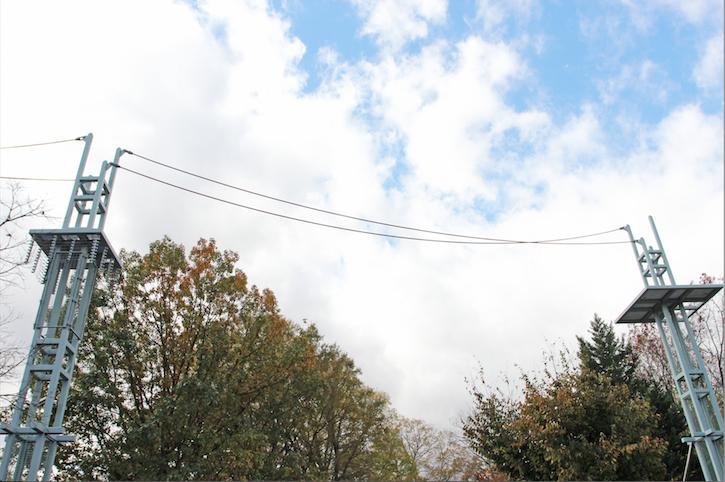Your donation will support the student journalists of Kirkwood High School. Your contribution will allow us to purchase equipment and cover our annual website hosting costs.
Following the O Line
November 7, 2014
Walking beneath the Great Ape House in the Smithsonian National Zoo in Washington, D.C., a shadow from above covers the guests below. The shadow is not a plane or a bird, but rather an orange-haired orangutan traveling on one of the only orangutan oriented transit systems in the U.S., the O Line.
The O Line is a transportation system made up of eight metal towers connected by plastic-coated steel cables that allow the orangutans to swing from tower to tower. It was constructed in 1995 and designed by former zookeeper and researcher Robert Shumaker, who copied the design from a zoo in Japan.
“We are one of the few zoos that have this amazing system for the orangutans to cross on,” Heather H, zookeeper, said.
The O Line allows for orangutans to travel, by choice, from the Great Ape House to the Think Tank, another housing complex and roaming area for the orangutans and other ape species. The towers are set up so the first and eighth towers are accessible to all ape species and the second through seventh are open only to those orangutans wanting to cross.
“These [orangutans] aren’t made to be on the ground,” Heather said. “[Transit] allows them to choose where they want to spend the night whether in the Great Ape House or the Think Tank.”
The O Line allows the orangutans and apes to be completely free from the cages and closed exhibits and feel me more at home. Since the towers are 50-feet-high, the altitude at which the O Line covers allows the orangutans to experience a jungle-like habitat.
“I think it’s wonderful for animals who are normally down low to have a chance to be up above the crowd and to feel a little less stressed about being at eye level,” Vivianne Peckham, visitor said.
Peckham lives across the street from the zoo and frequently visits to photograph the animals. She said new visitors may not know about or understand the O Line.
Marianne Luckembach, visitor said she thought the O Line was a part of a generator or power source before learning it was actually built for the orangutans.
Information on the O Line and is posted outside the Think Tank. One question the zookeepers are frequently asked is, “What stops the orangutans from jumping off the O Line?”
“Each tower has electrical wiring around it so they’d get a shock if they would try to climb down or anything,” Heather said.
The Indianapolis Zoo in Indiana hired Shumaker to lead the design of another O Line for their zoo.
The O Line has allowed for unlimited freedom and interactivity between the apes and looks to be a future feature for zoos around the world.
“People get to see these orangutans doing what they’re made to do, it’s up high,” Heather said. “It’s a sight to see.”

